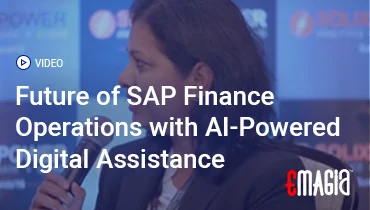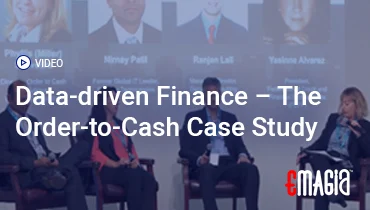In today’s complex dynamic business environment, organizations face an ever-growing array of financial risks. From market volatility operational breakdowns to credit defaults regulatory changes, these risks can significantly impact profitability, stability, even survival. Proactive identification, precise measurement, effective mitigation of these uncertainties are no longer optional but essential for sustainable growth. This critical need has driven the rapid evolution of financial risk management software, transforming how businesses approach risk.
A robust financial risk management software system provides the tools insights necessary to understand, analyze, control financial exposures across an enterprise. It moves beyond traditional manual processes, leveraging technology to offer real-time visibility, advanced analytics, automated compliance. Implementing sophisticated risk management solutions allows companies to make more informed decisions, protect their assets, capitalize on opportunities that might otherwise be overlooked due to perceived uncertainty. From large financial institutions requiring extensive bank risk management software to smaller enterprises seeking foundational business risk solutions, the right technology is key.
This comprehensive guide will explore the intricacies of financial risk management software, detailing its core functionalities, the various types of risks it addresses, the profound benefits it delivers. We will also delve into common implementation challenges, strategies for optimizing its use, emerging trends shaping the future of risk management technology. Discover how embracing modern enterprise risk management solutions can empower your organization to navigate financial uncertainties with greater confidence resilience.
What is Financial Risk Management Software?
At its heart, financial risk management software is a specialized application designed to help organizations identify, assess, monitor, control financial risks. It provides a centralized platform for managing various risk categories, ensuring consistency efficiency in risk processes.
Core Definition Purpose of Risk Management Systems
A risk management system automates many of the tasks traditionally performed manually in risk departments. Its primary purpose is to provide a comprehensive view of an organization’s risk landscape, enabling stakeholders to understand potential threats opportunities associated with financial decisions. This includes everything from calculating exposure to specific market movements to assessing the probability of loan defaults or operational errors. Essentially, it helps quantify uncertainty, making it manageable.
The Evolution from Manual Processes to Automated Risk Solutions
Historically, financial risk management relied heavily on spreadsheets, manual data compilation, subjective assessments. This approach was prone to errors, time-consuming, lacked scalability for complex global operations. The advent of dedicated risk management software marked a significant paradigm shift. Early solutions focused on specific risk types, but modern platforms offer integrated enterprise risk management solutions that encompass a holistic view of risk. This evolution has been critical for financial institutions, large corporations, any entity seeking a granular understanding of its financial exposures.
Key Features Capabilities of Financial Risk Management Software
Modern financial risk management software is packed with features designed to provide deep insights robust control over financial exposures. These capabilities are essential for effective risk control software.
Data Aggregation Integration for Holistic Risk Views
A cornerstone of effective financial risk management solutions is the ability to aggregate data from disparate sources across an organization. This includes financial systems, trading platforms, operational databases, external market data feeds. Robust integration capabilities ensure that all relevant information is captured in a centralized repository, providing a holistic, unified view of risk exposure. Without this comprehensive data, risk assessments remain fragmented incomplete, hindering proactive decision-making.
Advanced Risk Analytics Software: Modeling, Simulation, Scenario Analysis
At the core of any powerful risk management platform are sophisticated risk analytics software capabilities. These tools enable users to:
- Risk Modeling: Develop quantitative models to predict potential losses or gains under various conditions.
- Simulation: Run Monte Carlo simulations to understand the probability distribution of outcomes for financial instruments or portfolios.
- Scenario Analysis: Test the impact of hypothetical adverse events (e.g., market crash, sudden interest rate hike) on the organization’s financial health. This capability is crucial for identifying vulnerabilities before they materialize.
Risk analytics technology empowers businesses to move beyond reactive measures to a proactive, predictive risk posture.
Real-time Reporting Dashboards for Dynamic Risk Monitoring
Effective risk management requires continuous monitoring. Financial risk management software provides customizable dashboards real-time reporting features that offer instant visibility into key risk indicators. Users can track exposures, limits, potential breaches as they happen, enabling immediate intervention. Visualizations graphs simplify complex data, making it accessible to both risk managers senior executives. This dynamic monitoring capability is vital for an agile risk managing software approach.
Compliance Regulatory Reporting Automation
Meeting stringent regulatory requirements is a significant challenge for financial institutions corporations alike. Financial risk management software automates much of the compliance reporting process, ensuring adherence to standards like Basel III, MiFID II, Dodd-Frank, or local regulations. It provides audit trails, generates necessary reports, streamlines the process of demonstrating compliance to regulatory bodies. This significantly reduces the burden of manual reporting minimizes the risk of non-compliance penalties, making it an indispensable risk management solution for regulated entities.
Workflow Automation Alerts for Proactive Risk Mitigation
Automation extends beyond reporting to the very workflows of risk management. The software can automate risk assessment processes, trigger alerts when predefined risk thresholds are breached, route tasks to relevant personnel for review action. This ensures that potential issues are identified addressed swiftly, minimizing their impact. Automated alerts can flag everything from a sudden increase in counterparty credit risk to an anomaly in operational data, making the system a true operational risk management tool.
Specific Modules for Targeted Financial Risk Management Tools
Many financial risk management software solutions offer specialized modules to address distinct risk types:
- Credit Risk Management Software: Focuses on assessing managing the risk of loss due to a borrower’s failure to repay a loan or meet contractual obligations. It includes tools for credit scoring, exposure limits, portfolio analysis.
- Market Risk Management: Helps analyze mitigate risks arising from movements in market prices (interest rates, foreign exchange rates, commodity prices).
- Liquidity Risk Management: Monitors ensures an organization’s ability to meet its short-term financial obligations.
- Operational Risk Management Tool: Identifies assesses risks stemming from inadequate or failed internal processes, people, systems, or from external events.
- Investment Risk Management Software: Tailored for portfolio managers investors to analyze manage risks associated with investment portfolios.
- Insurance Risk Management: Specific applications for the insurance sector to manage underwriting, claims, actuarial risks.
These specialized tools provide granular control over specific risk exposures.
Types of Financial Risks Addressed by Software
Financial risk management software is designed to tackle a wide spectrum of risks that can impact an organization’s financial health. Understanding these categories is fundamental to selecting the right risk management technology.
Credit Risk Management: Assessing Counterparty Default Exposure
Credit risk is the risk of loss arising from a borrower’s or counterparty’s failure to meet their contractual obligations. Credit risk management software helps organizations assess the creditworthiness of customers, suppliers, financial partners. It enables the setting of credit limits, monitoring of payment behaviors, calculation of potential losses from defaults. For banks risk management software plays a crucial role in managing loan portfolios loan loss provisioning. It’s about understanding the likelihood of an “at risk” entity defaulting.
Market Risk Analysis: Volatility in Interest Rates, FX, Commodities
Market risk refers to the risk of losses in positions arising from movements in market prices. This encompasses:
- Interest Rate Risk: The impact of fluctuating interest rates on debt, investments, overall profitability.
- Foreign Exchange (FX) Risk: Losses due to unfavorable movements in currency exchange rates, critical for businesses with international operations.
- Commodity Price Risk: Exposure to price changes in raw materials or other commodities.
Risk analytics technology provides sophisticated models to simulate these movements assess their impact on financial portfolios, allowing for hedging strategies effective exposure management.
Operational Risk Management: Mitigating Process, People, System Failures
Operational risk is the risk of loss resulting from inadequate or failed internal processes, people, systems, or from external events. An operational risk management tool within the software helps identify, categorize, assess these non-financial risks that can have significant financial consequences. This includes risks related to fraud, IT system failures, human errors, legal issues, or even natural disasters. Effective management of operational risk enhances business continuity protects against unexpected financial setbacks.
Liquidity Risk Management: Ensuring Short-Term Obligations are Met
Liquidity risk is the risk that an organization will be unable to meet its short-term financial obligations as they fall due. This can happen if assets cannot be converted into cash quickly enough or if unexpected cash outflows occur. Financial risk management software helps monitor cash flow, forecast liquidity needs, manage funding sources, ensuring the organization maintains sufficient liquid assets to operate smoothly without facing solvency issues. This is a vital aspect, particularly for banking risk management software.
Compliance Regulatory Risk Oversight
The financial sector is heavily regulated, with constantly evolving rules aimed at ensuring stability preventing illicit activities. Compliance risk is the risk of legal or regulatory sanctions, financial loss, or reputational damage resulting from failure to comply with laws, regulations, codes of conduct, industry standards. Financial risk management solutions integrate regulatory frameworks, automate reporting requirements, track compliance status, helping organizations avoid costly penalties maintain their license to operate. This is a continuous process of risk management in software development adoption.
Benefits of Implementing Financial Risk Management Solutions
Investing in financial risk management software offers a multitude of benefits, extending beyond mere compliance to strategic advantages that enhance overall business performance resilience.
Enhanced Decision-Making Visibility Across the Enterprise
One of the most significant benefits is the enhanced visibility it provides. A centralized risk management platform offers a comprehensive real-time view of all financial exposures, allowing management to make more informed, data-driven decisions. Instead of relying on fragmented information, leaders can assess the true impact of various risks on their financial position, enabling more strategic allocation of resources better overall planning. This is true for all enterprise risk management solutions, from simple to complex.
Improved Compliance Regulatory Adherence
As discussed, regulatory landscapes are increasingly complex. Financial risk management solutions automate the collection processing of data required for regulatory reporting, significantly reducing the manual effort potential for errors. This leads to better adherence to compliance standards, minimizing the risk of fines, sanctions, reputational damage. For sectors like banking, robust banking risk management software is not just an advantage; it’s a necessity for continued operation.
Cost Reduction Operational Efficiency through Automation
Automating risk assessment, monitoring, reporting processes through risk managing software leads to substantial cost savings. It reduces the need for extensive manual labor, minimizes human errors, speeds up response times to emerging risks. The efficiency gains free up skilled personnel to focus on more strategic analysis rather than data compilation. This operational streamlining directly contributes to a healthier bottom line, offering a strong return on investment for risk management software Australia or globally.
Proactive Risk Identification Mitigation
Unlike reactive approaches that address problems after they occur, financial risk management software enables proactive risk identification. Through continuous monitoring, advanced analytics, scenario modeling, potential risks can be identified early, allowing organizations to implement mitigation strategies before a crisis erupts. This proactive stance protects financial assets, preserves capital, maintains business continuity, showcasing the value of proper risk management technology.
Increased Business Resilience Stability
Ultimately, a robust risk management platform contributes to increased business resilience stability. By systematically identifying, assessing, mitigating financial risks, organizations are better prepared to withstand adverse market conditions, operational disruptions, unexpected events. This enhanced resilience reduces volatility in earnings, protects shareholder value, builds trust among investors stakeholders. Companies that effectively manage risk are inherently more stable, better positioned for long-term success, effectively using risk mgmt software.
Challenges in Adopting Financial Risk Management Software
Despite the undeniable benefits, implementing financial risk management software is not without its hurdles. Businesses must be prepared to address these challenges for a successful deployment.
Integration Complexities with Legacy Systems
One of the most significant challenges is integrating new risk management systems with existing legacy IT infrastructure. Many older systems were not designed for real-time data exchange or API connectivity, making data aggregation difficult. This can lead to data silos, inconsistencies, manual data entry, undermining the efficiency gains promised by the software. A thorough assessment of existing systems a clear integration strategy are vital to overcome this hurdle.
Data Quality Availability Issues
The effectiveness of any risk analytics software hinges on the quality completeness of the underlying data. Inaccurate, incomplete, or inconsistent data can lead to flawed risk models, misleading reports, poor decision-making. Ensuring high data quality, establishing robust data governance frameworks, having processes for data validation cleansing are critical but often time-consuming tasks during implementation. This is where organizations can be “at risk software” if data isn’t reliable.
High Cost of Implementation Maintenance
Implementing comprehensive enterprise risk management solutions can be a substantial financial investment. This includes not only the software licensing fees but also costs associated with customization, integration, hardware infrastructure, ongoing maintenance, expert personnel. For smaller organizations, these costs can be prohibitive. A thorough cost-benefit analysis a clear understanding of the total cost of ownership are necessary before committing to a solution.
User Adoption Training for Risk Manager Software
Even the most advanced risk manager software is only effective if its users are proficient. Resistance to change, lack of understanding of new workflows, insufficient training can significantly impede user adoption. Companies must invest in comprehensive training programs, involve end-users in the selection implementation process, communicate the benefits clearly to ensure smooth transition successful utilization of the risicomanagement software.
Customization Scalability Needs
Every organization has unique risk profiles regulatory requirements. While out-of-the-box risk management solutions offer a strong foundation, extensive customization might be needed to align the software with specific business processes or complex risk models. Ensuring the chosen risk management platform is scalable to accommodate future growth, evolving risk landscapes, increasing data volumes is also a key consideration that can pose challenges if not planned properly.
Strategies for Optimizing Financial Risk Management Software Usage
Maximizing the value of your financial risk management software requires a strategic approach beyond initial implementation. These strategies ensure continuous improvement sustainable benefits.
Adopting a Phased Implementation Approach
Rather than attempting a big-bang deployment, a phased implementation approach can significantly reduce risk complexity. Start with a smaller module or a specific risk type, then expand incrementally. This allows organizations to learn, adapt, refine processes as they go, ensuring smoother integration better user adoption. It also helps in demonstrating early wins, building internal buy-in for the broader enterprise risk software rollout.
Establishing Robust Data Governance Data Quality Protocols
Since data is the lifeblood of risk analytics software, establishing strong data governance is paramount. This involves defining data ownership, quality standards, validation processes, regular auditing. Implementing automated data cleansing data enrichment tools can significantly improve the accuracy reliability of risk models reports. High-quality data ensures that the risk management analytics software delivers precise actionable insights.
Continuous Training Customization Based on Evolving Needs
The risk landscape is dynamic, organizational needs evolve. Therefore, ongoing training for users customization of the financial risk management tools are essential. Regular workshops, advanced training sessions, knowledge-sharing platforms ensure that users remain proficient maximize the software’s capabilities. Customization should be approached iteratively, responding to feedback business changes, ensuring the software remains aligned with strategic objectives continues to address emerging risks effectively.
Leveraging Advanced Risk Analytics Technology for Deeper Insights
To truly optimize, organizations must fully leverage the advanced capabilities of their risk analytics technology. This includes utilizing predictive modeling for credit risk, running complex stress tests for market risk, implementing advanced statistical methods for operational risk. Moving beyond basic reporting to deep, actionable insights allows for more sophisticated risk mitigation strategies a proactive stance against potential financial setbacks. This advanced usage ensures that the risk management company is truly data-driven.
Regular Review Updates of Risk Policies Processes
The software is a tool, not a static solution. Regular review updates of underlying risk policies processes are critical. As market conditions change, new regulations emerge, or business strategies shift, the framework within which the risk control software operates must also adapt. This ensures that the system remains relevant effective in identifying managing current future financial risks. This iterative approach to risk managmenet ensures sustained effectiveness.
Future Trends in Financial Risk Management Technology
The future of financial risk management software is being shaped by cutting-edge technologies that promise even greater automation, predictive power, integration. This includes advancements in areas like sas risk management frameworks.
The Growing Role of AI Machine Learning in Risk Analytics
Artificial Intelligence (AI) Machine Learning (ML) are set to revolutionize risk management analytics software. AI/ML algorithms can analyze vast datasets, identify complex patterns, predict future risk events with higher accuracy than traditional methods. This includes enhanced fraud detection, more precise credit scoring, sophisticated market risk forecasting, proactive identification of operational anomalies. The integration of AI will make financial risk services more intelligent predictive, moving towards truly autonomous risk monitoring mitigation. Solutions like those offered by SAS solutions are at the forefront of this trend.
Blockchain for Enhanced Transparency Auditability
Blockchain technology offers the potential to create immutable, transparent, distributed ledgers for financial transactions risk data. This could significantly enhance data integrity, reduce fraud, streamline auditing processes for financial risk management software. While still in early adoption for mainstream risk management, blockchain’s ability to provide a verifiable record of transactions could fundamentally change how certain financial risks (e.g., settlement risk, counterparty risk) are managed monitored.
Real-time Risk Monitoring Automated Alerts
The demand for real-time information will continue to drive advancements. Future risk management systems will offer even more instantaneous risk monitoring, leveraging streaming data analytics to provide continuous oversight. Automated alerts will become more intelligent, filtering out noise delivering only critical, actionable insights directly to risk managers. This shift from periodic reporting to continuous vigilance will enable faster response times minimize potential losses, making risk monitoring software more potent.
Cloud-based Risk Management Platform Solutions
The migration to cloud-based solutions will continue for financial risk management software. Cloud platforms offer scalability, flexibility, cost-efficiency, allowing organizations to access powerful risk analytics capabilities without significant upfront infrastructure investments. They facilitate easier collaboration, remote access, faster updates, making advanced commercial risk management applications more accessible to a wider range of businesses. This also enhances the agility of software risk management deployment.
RegTech: Automating Regulatory Compliance
RegTech (Regulatory Technology) solutions are specifically designed to help financial institutions comply with regulations more efficiently effectively. These technologies will become increasingly integrated with financial risk management software, automating regulatory reporting, monitoring compliance status, performing continuous checks against evolving rules. This reduces the compliance burden, minimizes regulatory risk, ensures that organizations remain in good standing with authorities, addressing the needs for risk management software for banks specifically.
Elevating Your Financial Risk Intelligence: How Emagia Helps
In the dynamic realm of financial risk, particularly within the Order-to-Cash (O2C) cycle, the ability to proactively manage credit, operational, liquidity risks is paramount. Emagia’s AI-powered O2C platform is specifically designed to enhance your financial risk management solutions by integrating risk intelligence directly into your daily operations. We go beyond traditional approaches to deliver predictive insights actionable automation.
Emagia strengthens your credit risk management by providing AI-driven credit scoring, real-time monitoring of customer creditworthiness, dynamic credit limit adjustments. This enables you to mitigate potential defaults effectively, reducing your overall credit exposure. Our platform’s automation capabilities minimize human error manual processes inherent in accounts receivable, directly addressing operational risk within your financial workflows. By streamlining invoicing, collections, cash application, Emagia significantly reduces the likelihood of process failures or data inconsistencies that could lead to financial losses.
Furthermore, Emagia’s cash flow forecasting capabilities provide unparalleled visibility into your liquidity position, helping you preempt potential liquidity shortfalls. By accelerating cash conversion cycle improving predictability of incoming funds, Emagia helps manage liquidity risk proactively. Our robust analytics reporting dashboards offer real-time insights into your risk exposure across the O2C cycle, providing the intelligence needed for timely intervention. Partner with Emagia to transform your approach to financial risk, moving from reactive responses to proactive, AI-driven risk intelligence that fortifies your financial health ensures sustainable growth.
Frequently Asked Questions About Financial Risk Management Software
What is Financial Risk Management Software?
Financial Risk Management Software is a specialized application designed to help organizations identify, assess, monitor, mitigate various financial risks, such as credit, market, operational, liquidity risks. It provides tools for data analysis, reporting, compliance automation, enhancing decision-making.
What types of financial risks does this software address?
This software addresses a range of financial risks including credit risk (default by counterparties), market risk (fluctuations in interest rates, exchange rates, commodity prices), operational risk (failures in internal processes or systems), liquidity risk (inability to meet short-term obligations), compliance risk (non-adherence to regulations).
How does Financial Risk Management Software help banks?
Financial Risk Management Software for banks is critical for managing extensive loan portfolios (credit risk), exposure to market fluctuations (market risk), regulatory compliance (e.g., Basel III). It provides comprehensive tools for risk modeling, capital adequacy assessment, compliance reporting, essential for maintaining financial stability meeting regulatory demands.
What are the key features of risk analytics software?
Key features of risk analytics software include data aggregation from multiple sources, advanced modeling (e.g., VaR, stress testing), scenario analysis, simulation capabilities, real-time dashboards, automated reporting, integration with other enterprise systems. These features enable deep insights into potential financial exposures.
Is SAS Risk Management a leading solution in this field?
Yes, SAS Risk Management is widely recognized as a leading suite of risk management solutions. SAS provides comprehensive tools for credit risk, market risk, operational risk, compliance, leveraging advanced analytics machine learning capabilities to serve large financial institutions corporations globally.
What are the benefits of using an Enterprise Risk Management (ERM) tool?
Implementing an enterprise risk management tool offers benefits like a holistic view of all organizational risks (not just financial), improved decision-making through integrated insights, enhanced compliance, optimized resource allocation, greater organizational resilience, reduced unexpected losses. It provides a structured approach to managing diverse risks.
Conclusion: Empowering Your Enterprise with Strategic Risk Management Software
The role of financial risk management software has evolved from a mere compliance tool to a strategic imperative for any forward-thinking organization. By providing advanced capabilities for risk identification, quantification, mitigation, these powerful risk management solutions empower businesses to navigate the turbulent financial landscape with unprecedented clarity confidence. The continuous innovation in risk management technology, especially with the integration of AI machine learning, promises even more sophisticated predictive capabilities in the future.
Embracing a comprehensive risk management platform is not just about avoiding losses; it’s about optimizing capital, enhancing decision-making, fostering resilience that drives sustainable growth. Organizations that proactively invest in robust financial risk management software are better positioned to withstand economic shocks, capitalize on emerging opportunities, secure their financial future in an increasingly interconnected volatile world.



